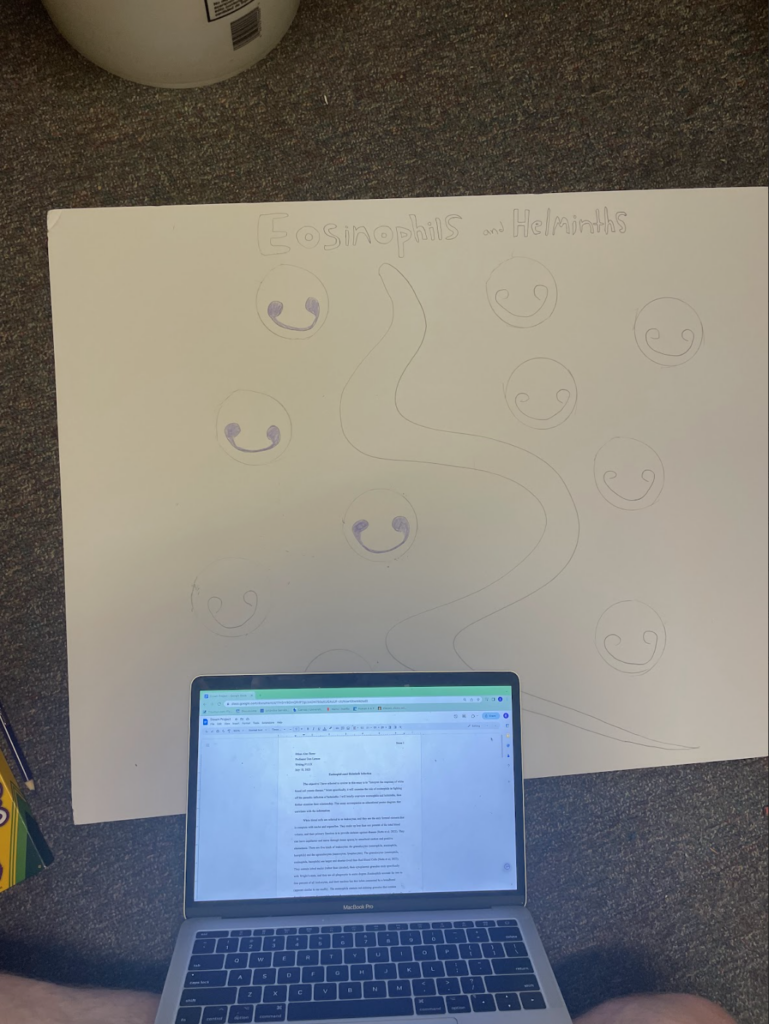The objective I have selected to review in this essay is to “Interpret the response of white blood cell counts disease.” More specifically, it examines the role of eosinophils in fighting off the parasitic infection of helminths.



The objective I have selected to review in this essay is to “Interpret the response of white blood cell counts disease.” More specifically, it examines the role of eosinophils in fighting off the parasitic infection of helminths.


Katrina Bast’s STEAM abstract
After reading Ethan Stone’s STEAM project essay, I learned about eosinophils, mainly how they fight against helminths. Eosinophils are white blood cells that have a two-lobed nucleus and granulated cytoplasm. Eosinophils primary function is to fight disease. Helminth is a parasitic worm that infects individuals, primarily in third-world countries. Ethan found that when the helminth infects an individual, it provokes an immune response. This immune response is interpreted in his poster.
From Ethan’s drawings, I found that once the helminth is in the body, the eosinophils surround the parasitic worm. The helminth is big and round in the poster. In Ethan’s essay, he states that the worm can be a meter in length. The eosinophils have granules in their cytoplasm. These granules are red-staining and contain the digestive enzymes responsible for fighting helminths. The eosinophils release a digestive enzyme onto the worm, which leads to the worm’s disintegration.